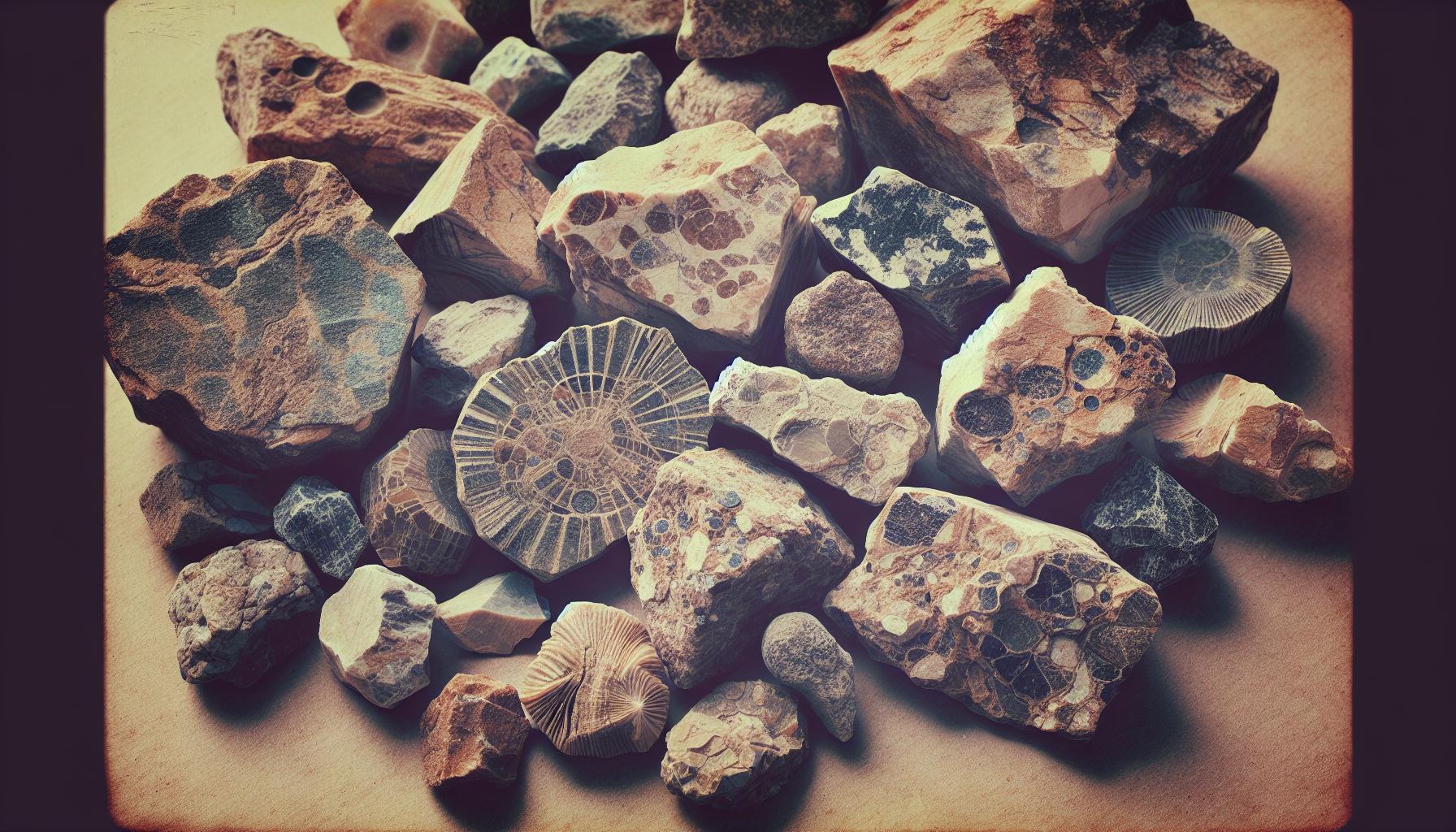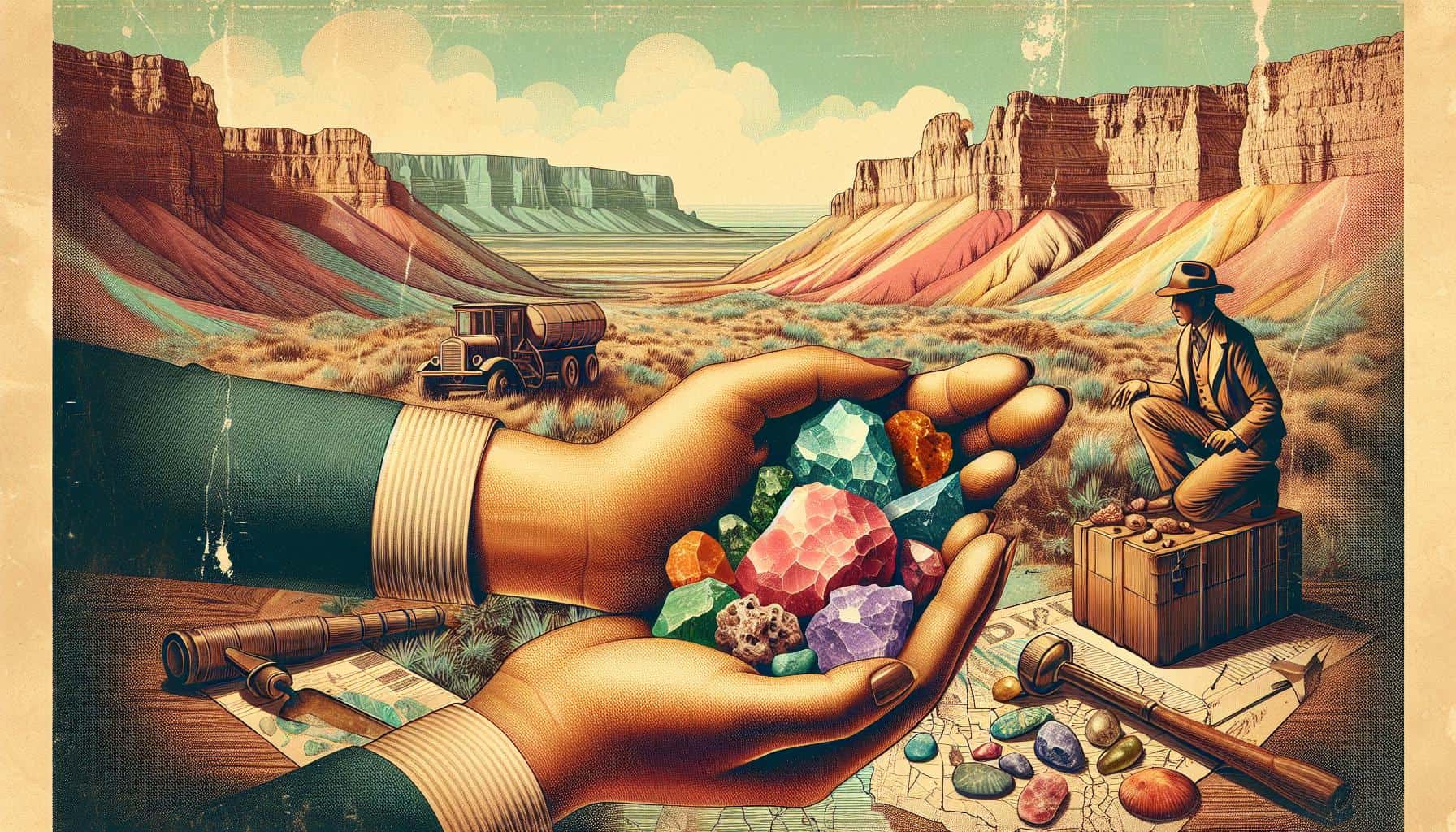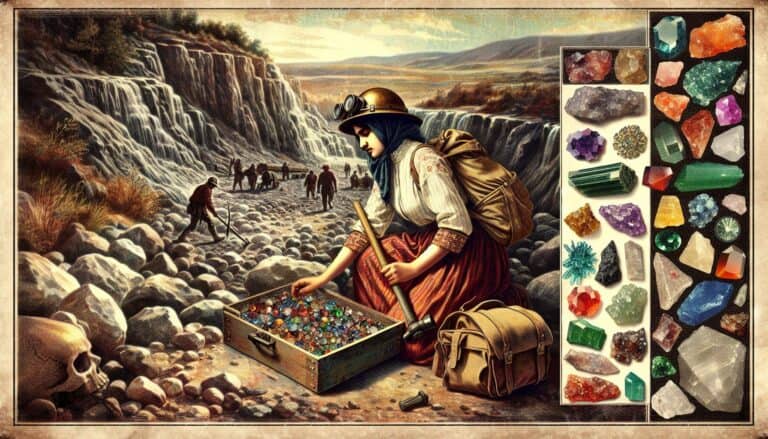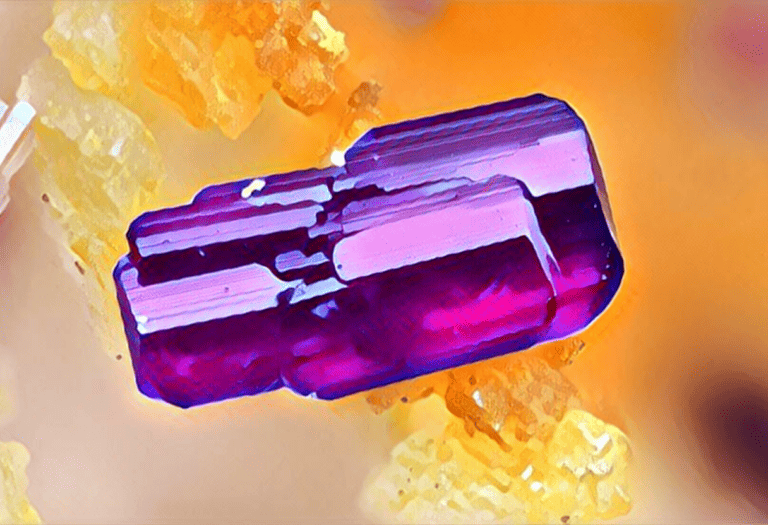Idaho’s rugged beauty isn’t just skin deep; beneath the surface lies a treasure trove of geological wonders.
If you’re a rockhound, the Gem State’s diverse landscape offers an exciting playground to explore. From the glimmering quartz of the panhandle to the rich basalt fields of the Snake River Plain, Idaho’s got your back when it comes to rockhounding.
You’ll find Idaho is more than just potatoes. It’s a haven for collectors seeking opal, garnet, jasper, and the state’s famous star garnets.
Whether you’re a seasoned collector or a curious newbie, the state’s abundant public lands and mines provide a plethora of opportunities to unearth your own piece of Idaho’s natural splendor.
Idaho’s vast landscapes offer rockhounds a variety of locations like Emerald Creek for star garnets, Bruneau Canyon for jasper, Spencer Opal Mines for opals, St. Joe River for garnets, and Careywood for quartz crystals. Always respect land regulations and seek permissions for rockhounding in Idaho.
Idaho Rockhounding Locations
With Idaho’s rich geological tapestry, you’re never far from a premier rockhounding spot. The state’s diversity in minerals and accessible locations makes it a rockhound’s paradise.
Gem State’s Northern Regions, specifically Emerald Creek in the Panhandle National Forest, is a must-visit for star garnet enthusiasts. You’re one of the few with the chance to unearth these rarities since star garnets are found in only two places globally.
In the south, Bruneau Canyon captivates geologists and adventurers alike. This awe-inspiring spot is renowned for its Bruneau jasper—a gemstone celebrated for its deep reds and browns. Here, the thrill of discovery aligns with stunning natural beauty.
Can’t-miss localities include:
- Spencer Opal Mines: Home to the state gem, the opal comes alive with fiery colors in these mines. Plus, you can dig for your own opals—a truly hands-on experience.
- St. Joe River: Well-known for its abundance of garnets, this area allows you to sift through river sediments for these beautiful deep-red gems.
- Careywood: This location is perfect for finding quality quartz crystals. With patience, you might uncover some impressive specimens.
| Location | Known For |
|---|---|
| Emerald Creek | Star Garnets |
| Bruneau Canyon | Bruneau Jasper |
| Spencer Opal Mines | Opals |
| St. Joe River | Garnets |
| Careywood | Quartz Crystals |
Always remember to respect the land and adhere to local regulations while rockhounding. Many sites require permits or have specific rules for collecting.
Rockhounding in Idaho not only satisfies the quest for precious keepsakes but also brings you closer to the heart of nature’s artistry. With tools in hand and an eye for the unique, your treasure hunt in the Gem State promises rich rewards.
What Gemstones are Found in Idaho?

Idaho, often referred to as the “Gem State”, is renowned for its rich variety of precious and semi-precious stones, raising the interests of amateur and professional rockhounds alike. Your quest for these treasures can yield an array of stunning gemstones, each with its unique charm and beauty.
Star Garnets, exclusively found in only two places in the world, rank as Idaho’s state gemstone. At Emerald Creek, you’re in for the unique opportunity to sift through gravel and sand to find your own star garnet, a stone famed for asterism, displaying star-like patterns.
Another treasure to unearth is the Idaho Opal which is primarily discovered at the Spencer Opal Mines. These opals are unique due to their transparency and play of color, making them highly sought after by collectors and jewelry makers.
If you’re seeking a touch of the extraordinary, explore areas such as Bruneau Canyon for Bruneau Jasper. This peculiar gemstone features mesmerizing patterns and is a favorite among lapidarists for cabochon cutting and decorative purposes.
In the table below, you’ll find a quick guide to where you might come across specific gemstones in Idaho:
| Gemstone | Location |
|---|---|
| Star Garnets | Emerald Creek |
| Idaho Opal | Spencer Opal Mines |
| Bruneau Jasper | Bruneau Canyon |
| Garnets | St. Joe River |
| Quartz Crystals | Careywood |
Not limited to the above list, the terrain across Idaho also offers a plethora of other stones, including agate, jasper, and topaz. Streambeds, mountainsides, and desert plains can hide these minerals in plain sight, waiting for an eagle-eyed rockhound to reveal their whereabouts.
Remember, each area has specific regulations and seasons; ensure you’re well-informed before your adventure. Rockhounding in Idaho doesn’t just promise the thrill of discovery; it’s a practice in patience and respect for the earth’s ancient offerings. With the right tools and a bit of luck, your collection could soon boast some of Idaho’s most beautiful gemstones.
What Sedimentary Rocks You Can Find in Idaho?

When you’re trekking across Idaho’s landscapes, the variety of sedimentary rocks you can find is as vast as the terrain itself. Sedimentary rocks, formed from particles of sand, shells, pebbles, and other fragments of material, are abundant in the state. Gradually, these particles settle in layers and over millions of years, are compacted and cemented into rock.
Among the most noteworthy sedimentary rocks in Idaho, you’ll come across limestone. This rock is primarily made of calcite and is often used in construction due to its durability. It forms from the skeletal fragments of marine organisms, making it a unique find for both its visual appeal and geological significance.
- Shale
- Mudstone
- Sandstone
These are additional sedimentary rocks that contain clues to Idaho’s ancient environmental conditions. Shale, the most abundant sedimentary rock on the planet, forms from mud that has been compacted and then solidified. Mudstone is similar, though typically harder and more blocky in structure, while sandstone is composed mainly of sand-sized particles and has a gritty texture.
In Idaho, the Wood River Valley is renowned for its exquisite examples of dolomite, a type of limestone that contains magnesium. Exploring this area could reward you with specimens of dolomite that showcase unique crystal formations and a rich geological history. Don’t forget to check for fossils often present in these sedimentary rocks, which paint a picture of life in Idaho millions of years ago.
To find these treasures, research locations where the bedrock is exposed, such as in road cuts or along riverbanks. Always remember to adhere to local regulations, ensuring your rockhounding plans are both enjoyable and lawful. Keep your gear handy, bring a reliable guidebook, and prepare to be amazed by the sedimentary stories told by Idaho’s geology.
What Metamorphic Rocks are found in Idaho?
While you’re exploring the rugged terrains of Idaho, you’ll encounter an array of metamorphic rocks, each telling a unique geological story. Metamorphic rocks result from the transformation of existing rock types through heat, pressure, and mineral processes without the rock melting into liquid form.
In Idaho, one of the most sought-after metamorphic rocks is schist. This rock is easily identifiable by its flaky layers and can be found in various locations, including the Idaho Batholith and the Bitterroot Mountains. Schist often contains traces of gold and gemstones, luring rockhounds who seek to uncover its hidden treasures.
Gneiss is another metamorphic wonder in Idaho, presenting itself with distinctive banding patterns. This rock is primarily located in the northern regions of the state, where ancient rocks were deeply buried and subjected to intense heat and pressure, giving rise to its unique texture and formation.
- Marble: Once limestone, marble’s elegant swirls are the result of intense metamorphism.
- Quartzite: Formed from sandstone, quartzite is prized for its hardness and glassy luster.
It’s crucial to understand the environments where these metamorphic rocks are typically found. Areas with a history of tectonic activity, such as the folds within the Rockies, are prime spots for you to explore. Look for regions where older rocks have been pushed to the surface; these are the places where metamorphic rocks like to hide.
Be sure to familiarize yourself with the rules governing rockhounding in each area. Public lands often permit the collection of rocks for personal use, but check the regulations before you start your search. With the right prep and a keen eye, you’ll find Idaho’s metamorphic rocks an enthralling quest in your rockhounding journey. Keep your rock hammer at the ready, and your field guide in hand as you scour the landscape for these geological gems.
What Igneous Rocks can You Find in Idaho?
Idaho’s geological landscape isn’t just limited to metamorphic rock. The state’s fiery volcanic past left behind an impressive array of igneous rocks. When you’re out in the field, keep your eyes peeled for basalt and rhyolite, two of the most common igneous types in the region.
Basalt, formed from quick-cooling lava, is abundant in the Snake River Plain, a geologic marvel in its own right. This area is a hotspot for rockhounders due to the vast lava fields and cinder cones. Rhyolite, on the other hand, is a little trickier to find but can be discovered in the Owyhee Mountains and certain parts of the Challis Volcanics.
Notably, Idaho is also home to the rare and precious star garnets. These gems, found in igneous and metamorphic rocks, are primarily found in the Panhandle—especially the Emerald Creek area, one of the only two places in the world where star garnets are found in significant quantities.
- Basalt: Snake River Plain
- Rhyolite: Owyhee Mountains, Challis Volcanics
- Star Garnets: Emerald Creek area
Rockhounding in Idaho thus offers the chance to unearth unique and beautiful specimens that tell the story of the state’s volcanic history. Always check with local authorities and respect land ownership; Idaho’s igneous treasures are often in areas with specific rules that safeguard these geological wonders.
Essential Tools for Igneous Rockhounding
Proper gear is vital for a successful rockhounding trip. Ensure you’ve got a durable rock hammer, safety glasses, and gloves for safe and effective collecting. For identification, a field guide specific to Idaho’s geology can be invaluable. GPS or a reliable map can help you navigate the sometimes remote igneous rock locations throughout the state.
Panning for Gold in Idaho
When you’re ready to take your rockhounding adventure a step further, gold panning in Idaho offers a thrilling opportunity. The state’s rich history of mining and gold rush lore beckons gold enthusiasts to try their luck in its waters. Idaho’s Rivers, abundant with mineral wealth, have been a hotspot for gold panners since the mid-1800s.
The Boise Basin in particular is renowned for being one of the richest gold areas in the country. It’s a must-visit locale if you’re gunning for those elusive gold flakes. In addition, the Clearwater River near Pierce is hailed as the site where gold was first discovered in Idaho, yielding another popular spot for panners.
If you’re looking for a more guided experience, several areas offer panning for a small fee. These sites ensure that you have a fair shot at finding gold while learning the ropes of this age-old practice:
- Eagle City Park
- Yellow Pine
- Murray
- Use a gold pan with riffles for the best chance at retaining gold.
- Swirl the contents to separate lighter materials from heavier gold particles.
- Keep a keen eye; gold can be as small as a pinhead.
Below is a table that delineates some of the best rivers for gold panning in Idaho and the type of gold commonly found:
| River Name | Type of Gold Found |
|---|---|
| Salmon River | Fine Gold, Nuggets |
| Snake River | Fine Gold, Flour Gold |
| Coeur d’Alene River | Flake Gold, Wire Gold |
| Boise River | Fine Gold, Small Nuggets |
Always remember that much of the land suitable for gold panning is under federal management, so you’ll need to stay informed about the locations where you can pan legally. Check with the Bureau of Land Management or the US Forest Service before you set out. Obtain the necessary permits, and respect private claims to ensure that your treasure hunt remains both enjoyable and law-abiding.
Warm, shallow areas of rivers and streambeds in late summer and early fall are ideal as the water level is lower, making it easier to access potential gold-bearing gravel. So grab your pan, head to the water’s edge, and with a little patience, you might just strike it rich.
Rocks and Minerals Found in Idaho
Idaho’s geological makeup is a treasure trove for rockhounds like yourself, with a diverse range of rocks and minerals scattered across the state. Whether you’re scouring the western parts for petrified wood or the eastern reaches for quartz crystals, the Gem State lives up to its nickname.
Petrified wood, remnants of ancient forests, is prevalent in the deserts and mountains of Idaho. While exploring, you may come across this fossilized wood, which has preserved the original tree’s structure and details. These stone logs and fragments, now turned to quartz, offer not only a glimpse into prehistoric ecosystems but also stunning specimens for collectors.
As you trek through the mountainous terrain, keep your eyes peeled for quartz crystals. These natural beauties are often found in Idaho’s high country within the voids of rocks or alongside streams. You’ll discover a variety of quartz, from clear rock crystals to smoky quartz and even amethyst if you’re lucky.
Among the most highly sought-after gems in Idaho are the opals mined in the Spencer area. The Spencer opal mine, accessible to the public for a fee, is famous for these fiery stones. Here, you can dig for your own opal treasures, a dazzling addition to any collection.
Below is a table highlighting some of the significant finds across the state:
| Mineral | Description | Common Locations |
|---|---|---|
| Star Garnet | Rare gem with a star-shaped reflection | Emerald Creek, Panhandle |
| Opal | Gemstone with a play of colors | Spencer opal mine |
| Quartz Crystals | Comes in various colors and transparencies | Mountains of Idaho |
| Petrified Wood | Fossilized wood turned to stone | Various deserts and mountains |
Remember to always adhere to the regulations set forth by the Bureau of Land Management and the US Forest Service when pursuing these natural treasures. With the right permissions and guidelines followed, your rockhounding adventure in Idaho can be both successful and respectful of the natural environment.
Where Can I Find Fossils in Idaho?
Idaho’s vast lands stretch over various geological terrains, providing a plethora of opportunities for fossil enthusiasts. When you’re on the hunt for a piece of prehistoric life, you’ll find that Idaho doesn’t disappoint.
Clarkia Fossil Beds, located in the northern panhandle of Idaho, is renowned for beautifully preserved plant and fish fossils. The beds are a snapshot of life from over 15 million years ago, and the fossils here are unique due to the volcanic ash that preserved them.
In southwestern Idaho, you’ll find the Hagerman Fossil Beds National Monument, home to the famous Hagerman Horse fossil, which is America’s answer to the evolutionary story of the horse. Aside from horses, the monument has a wealth of other Pliocene-era fossils, including over two hundred species of plants and animals.
The southeastern region of the state is not to be overlooked. Near American Falls Reservoir, the high desert plains have revealed fossils of Pleistocene mammoths, bison, and camels. You’re likely to stumble upon a variety of ancient treasures here, as the reservoir’s fluctuating water levels constantly expose new finds.
Before embarking on your fossil hunting journey in Idaho, check the current regulations for fossil collecting. Public lands have specific laws protecting natural resources, including fossils. Usually, you’re allowed to collect invertebrate and plant fossils on BLM lands for personal use without a permit. However, vertebrate fossils are a different story and can be collected only by researchers with special permits. Always check with local authorities before you start digging.
Make sure to bring the right tools, such as rock hammers, chisels, and brushes, to carefully extract any fossils you find. Protecting the integrity of the fossil and the surrounding environment is paramount for the sustainability of rockhounding and paleontological pursuits in the state.
By respecting the land and its ancient inhabitants, you’re sure to have an unforgettable rockhounding experience in Idaho, uncovering the secrets lying beneath its soils.
Idaho Rockhounding Laws & Regulations
Before you set out on your rockhounding adventure in Idaho, it’s crucial to familiarize yourself with the local laws and regulations. These rules are in place to protect the geological history and the environment, so it’s important to follow them closely to ensure these treasures are around for future generations.
Firstly, when it comes to federal lands, such as national forests and BLM (Bureau of Land Management) areas, you’re typically allowed to collect small amounts of rocks, minerals, and fossils without a permit as long as it’s for personal use, not for commercial purposes. However, certain areas may have their own specific regulations or prohibitions. It’s your responsibility to check in with the local district offices before collecting.
- National forests: Generally, allow for the collection of reasonable quantities of specimens.
- BLM lands: Often permit non-commercial collecting, but with strict quantity limits and rules against disturbance of land.
For state lands, the regulations can be stricter. Public lands managed by the Idaho Department of Lands often require permits for any kind of collection, and some locations may be completely off-limits. Furthermore, collecting on private land requires express permission from the landowner. Trespassing to rockhound is not only disrespectful but illegal, and could result in hefty fines or worse.
Always remember that cultural artifacts and vertebrate fossils are protected by law; removing them is illegal. Plant fossils and invertebrates, like the ones found at Clarkia Fossil Beds, are collectible under certain conditions.
Safety guidelines should always be adhered to when rockhounding. This includes wearing appropriate safety gear, being cautious with tools, and respecting the terrain. Leave no trace principles are a must, ensuring that your presence doesn’t negatively impact the land.
By respecting these laws and guidelines, you’ll help keep Idaho’s geological history preserved and accessible. Whether you’re marveling at the Hagerman Horse fossil or searching for gemstones, practicing responsible rockhounding ensures that these activities remain sustainable and permitted.
Rockhounding Tips for Beginners in Idaho
Gearing Up: Essential Tools for Rockhounding
Before you start your rockhounding adventure in Idaho, it’s crucial to gear up with the right tools. You wouldn’t want to find the perfect spot only to realize you’re not equipped to take home your treasures. Here’s a quick list of rockhounding essentials:
- Rock hammer or geologist’s hammer for chipping away at rock formations
- Chisels and pry bars for extracting specimens
- Safety goggles to protect your eyes from flying debris
- Sturdy gloves to shield your hands from sharp rocks
- Durable backpack or field bag to carry your finds
- Buckets or containers for transferring smaller pieces
- Field guides and maps to identify rocks, minerals, and fossils
Investing in durable and reliable tools can make a significant difference in your rockhounding experience.
Safety Tips While Rockhounding
The excitement of discovering new specimens can sometimes overshadow the importance of rockhounding safely. Keep these safety tips in mind to ensure an injury-free and enjoyable outing:
- Always wear safety gear, including goggles and gloves
- Wear comfortable, protective clothing and sturdy footwear to navigate rough terrain
- Bring plenty of water and snacks to stay hydrated and energized
- Apply sunscreen and wear a hat to protect against the sun’s harmful UV rays
- Inform someone of where you’re going and when you expect to return
- Be aware of the weather conditions and prepare for sudden changes
- Learn basic first aid and carry a first aid kit for emergencies
By prioritizing safety, you’ll ensure that your rockhounding expeditions are memorable for all the right reasons.
Legal Guidelines for Rockhounding Enthusiasts
Rockhounding in Idaho, as in any state, comes with its set of rules and regulations. To ensure that you’re collecting responsibly and lawfully, follow these guidelines:
- Familiarize yourself with federal, state, and local laws governing rockhounding
- Obtain necessary permits or permissions when collecting on state lands or in national parks
- Respect private property; seek permission before collecting on privately owned land
- Adhere to the rule of taking only what you need—practice leave no trace principles
- Understand the distinction between surface collecting and more invasive methods that may require special permits
- Report significant findings to the appropriate authorities, as they may have scientific or historical importance
Staying within the bounds of the law not only protects you from fines or legal consequences but also helps to preserve Idaho’s geological wonders for future generations of rockhounds.
Conclusion: Idaho Rockhounding Locations
With Idaho’s rich tapestry of geological treasures, you’re set for an adventure that’s as educational as it is exhilarating.
Remember to gear up with the right tools, respect the land by adhering to the guidelines, and stay safe while uncovering the past. Whether you’re marveling at the preserved wonders of the Clarkia Fossil Beds or tracking the ancient footsteps at Hagerman, you’re part of a community preserving Idaho’s natural heritage. Keep this guide handy, follow the map to these rockhound havens, and let your curiosity lead the way to your next great discovery.
Happy hunting!







